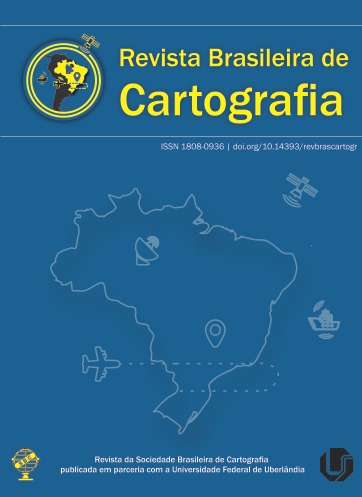Generation of Gravity Functionalities from Aerogravimetry Observations and Global Geodetic Models
Main Article Content
Abstract
The Brazilian Vertical Reference Frame - BVRF is structured in two different segments with offsets between them. Each one is linked to a different local Vertical Datum – VD: Imbituba and Santana. There are, already, some determinations about the referred offset in the geopotential space related to BVRF last realization in 2018, in general, based in gravimetry and leveling associated with GPS positioning. These solutions have as limitations the use of surveys on available open leveling lines and local VDs. The current view is that each segment should have its offset referred to a same global reference surface. Such determination must be based on solutions of the Geodetic Boundary Value Problem. For this kind of solution is mandatory gravity functionals (for example, gravity disturbances) independent of reductions in local reference systems. In the connection region (in the states of Pará and Amapá), an extensive aerogravimetric survey for geophysical purposes is available. It should receive deep depuration for applications in Geodesy. This work presents the depuration activities and compatibilization with a global reference system on the aerogravimetric survey. The DEM MERIT replaced the SRTM in gravity reductions and the GGM XGM 2019 replaced the EGM96. It was introduced the modeling of the permanent tides. These actions were done aiming to accomplish the fundamental requirements related to data base for the linking BVRF segments to an only global reference. With employed strategies, a significant improvement in the adherence of gravity functionals with global geodetic models was obtained (RMS better than 7mGal).
Downloads
Metrics
Article Details
Authors who publish in this journal agree to the following terms:
- Authors retain copyright and grant the journal right of first publication with the work simultaneously licensed under a Creative Commons Attribution License that allows others to share the work with an acknowledgment of the work's authorship and initial publication in this journal.
- Authors can enter into separate, additional contractual arrangements for the non-exclusive distribution of the journal's published version of the work (e.g., post it to an institutional repository or publish it in a book), with an acknowledgment of its initial publication in this journal.
- Authors are permitted and encouraged to post their work online (e.g., in institutional repositories or on their website) before and during the submission process, as it can lead to productive exchanges, as well as earlier and greater citation of published work (see "The Effect of Open Access").





